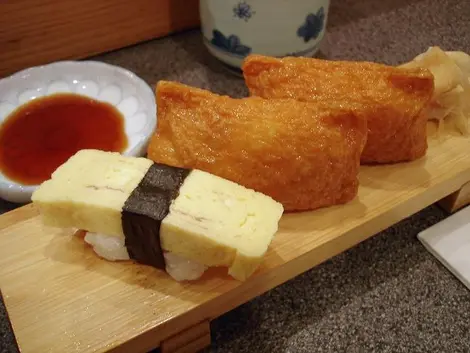Tamagoyaki 日本の卵焼き
Japanese omelet
In Japan, the omelet has many variations. It can be thick, very thin or cut into strips. This dish is one of the basics of Japanese cuisine.
Egg is an important ingredient in Japanese cuisine. In most restaurants you will find a version of an omelet dish, usually served with meat or fish.
Tamagozushi, sushi rice with an omelet topping, or tamago donburi, bowls of rice topped with a softly-cooked omelet, are both very common dishes. But you will soon notice that the Japanese omelet differs - both in texture and taste - from omelets cooked in the West.
Preparation
Cooked in a square pan with high edges (called makiyakinabe), then rolled very tightly, Japanese omelet is often served sliced into small, thick and dense slabs.
As for taste, mirin, a sweet rice wine, is added, along with sugar, which gives it its particular sweet-savory taste.
Called atsuyaki tamago, or dashi-maki tamago, Japanese omelet is widely used in the preparation of bento (packed lunches) and Japanese breakfast.
The preparation of tamagoyaki is a real art.
Variations
- Omurice
An omurice is, as its name suggests, an omelet stuffed with rice: this American inspired dish is very popular in Japan. Often covered in ketchup, it's loved by Japanese children.
The omurice is a fine example of yoshoku, that is to say, a Western dish redesigned by Japanese chefs for the Japanese palate, a trend started during the Meiji Restoration in the early twentieth century.
- Usuyaki tamago
Usuyaki tamago is an omelet cooked like a pancake, and is particularly used to make chakinzushi, a kind of Japanese pouch. Chakinzushi are filled with gomokuzushi, rice seasoned with vegetables.
- Kinshi tamago
Kinshi tamago is a cross between a flat omelet and a salad. Made up of strips of usukiyaki tamago, it often garnishes cold dishes such as soba, or even rice.


















